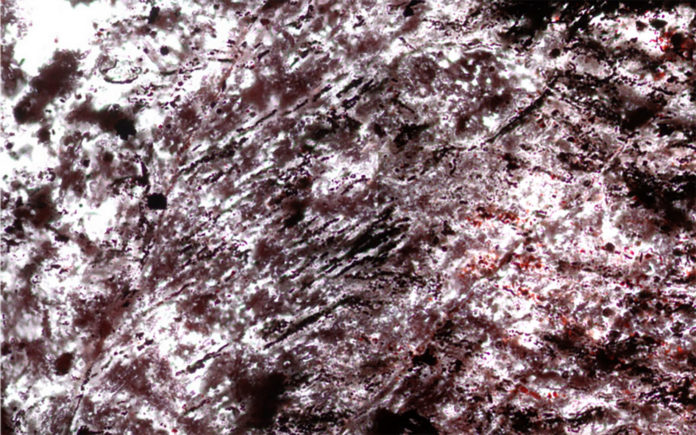Analysis of a fist-sized rock from Quebec, Canada, estimated to be between 3.75 and 4.28 billion years old, rewrites the history of life on Earth. A new discovery made by scientists from the University College London is based on the analysis of this rock. According to scientists, diverse microbial life existed on Earth at least 3.75 billion years ago.
Past analysis of the rock suggests that the tiny filaments, knobs, and tubes in the rock are made from bacteria. However, not all scientists agreed that these structures – dating about 300 million years earlier than what is more commonly accepted as the first sign of ancient life – were of biological origin.
Now, after further investigation of the rock, scientists uncovered a considerably larger and more complicated structure – a nearly centimeter-long stem with parallel branches on one side – as well as hundreds of deformed spheres, or ellipsoids, amid the tubes and filaments.
Scientists noted, “While some of the structures could conceivably have been created through chance chemical reactions, the “tree-like” stem with parallel branches was most likely biological in origin, as no structure created via chemistry alone has been found like it.”
Scientists also describe the ways through which bacteria got their energy. They found that mineralized chemical by-products in the rock that are consistent with ancient microbes living off the iron, sulphur, and possibly also carbon dioxide and light through a form of photosynthesis not involving oxygen.
Lead author Dr. Dominic Papineau (UCL Earth Sciences, UCL London Centre for Nanotechnology, Centre for Planetary Sciences, and the China University of Geosciences) said: “Using many different lines of evidence, our study strongly suggests several different types of bacteria existed on Earth between 3.75 and 4.28 billion years ago. This means life could have begun as little as 300 million years after Earth formed. In geological terms, this is quick – about one spin of the Sun around the galaxy.”
In the study, scientists also described the ways through which bacteria got their energy. They discovered mineralized chemical by-products in the rock consistent with ancient microbes living off the iron, sulphur, and possibly carbon dioxide and light.
Scientists noted, “These new findings suggest that various microbial life may have existed on primordial Earth, potentially as little as 300 million years after the planet formed.”
Scientists analyzed the rock specimens under various optical and Raman microscopes. They also digitally recreated sections of the rock using a supercomputer. The supercomputer processed thousands of images from two high-resolution imaging techniques: micro-CT, or microtomography, and focused ion beam.
Both techniques produced stacks of images to create 3D models of different targets. Using the 3D models, scientists confirmed that the haematite filaments were wavy and twisted and contained organic carbon, characteristics shared with modern-day iron-eating microbes.
Scientists concluded, “The haematite structures could not have been created through the squeezing and heating of the rock (metamorphism) over billions of years, pointing out that the structures appeared to be better preserved in finer quartz (less affected by metamorphism) than in the coarser quartz (which has undergone more metamorphism).”
For this study, scientists collaborated with scientists from UCL Earth Sciences, UCL Chemical Engineering, UCL London Centre for Nanotechnology, and the Centre for Planetary Sciences at UCL and Birkbeck College London, as well as from the U.S. Geological Survey, the Memorial University of Newfoundland in Canada, the Carnegie Institution for Science, the University of Leeds, and the China University of Geoscience in Wuhan.
Journal Reference:
- Dominix Papineau et al. Metabolically diverse primordial microbial communities in Earth’s oldest seafloor-hydrothermal jasper. DOI: 10.1126/sciadv.abm2296
